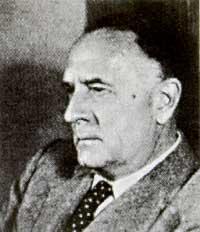Hubble, Edwin Powell
(1889-1953)
Edwin P. Astronomer Hubble entered the American town of Missouri, Marshfield, on November 20, 1889. He was the fifth of seven brothers, as a young man he studied at the University of Chicago, where the prestigious astronomer George Ellery Hale was his teacher.

But Hubble had to choose between being a lawyer as his sits or making a living as a professional boxer, which was also very good. He preferred his father's path and after obtaining a scholarship, in Oxford (Great Britain), with Rhodes as a teacher, he began studying law. Studying in Oxford, Georges Carpentier played a match with the French champion of heavy weight boxers.
After his law degree, he returned to North America, where he worked in the Kentucky court. He soon got bored and immediately headed his steps to astronomy. From 1914 to 1917 he worked at the Yerkes Observatory in Wisconsin.
At the end of World War I, in 1919 he began working at the Wilson California Mountain Observatory, with a hundred inch telescope at his disposal.
At that time Hubble was concerned about the luminous spots of nebulae. Some of them were investigated by Messier a century and a half before, but there were still many questions about them unanswered. Then the dimensions of our galaxy (our Sun was already the Milky Way) were perfectly calculated by Harlow Shapley, but outside our galaxy he wondered if there was anything more than the Magellanic Clouds studied by Leavitt.
Hubble thought the way to answer this question was in the nebulae. Some nebulae were undoubtedly clouds of dust and gas illuminated by the stars of our galaxy, but the luminosity of others, like that of Andromeda, was, according to Hubble, an influence of something else. Perhaps within that nebula there would be abundant modest stars and with their luminosity they would reach an effect similar to that of our Milky Way. As the clarity of Andromeda was less than that of Esnebide, Andromeda went much further.
Noble-type stars were detected in the Andromeda nebula, but no common stars were detected until Hubble's time. However, in 1924, through his large telescope, the largest of the time, he detected common stars within the Andromeda nebula. Hubble also showed that some of these stars were variable ampheids. Using the period and luminosity law of Shapley and Leavitt, Hubble calculated that it was 800,000 light-years from the Earth of Andromeda; eight times the distance from the Earth to the nearest star of our galaxy (twenty years later it was shown that the distance was actually greater). Andromeda, therefore, was a nebula external to our galaxy.
Later, many other nebulae were discovered that are a year away from billionaires, and Shapley proposed to call them galaxies, because our Milky Way was like them.
Hubble continued to classify galaxies according to their shape and suggest views on their evolution, and in 1929 he dared to publish the interpretation of the radial velocities of galaxies measured by Slipher.
According to him, the idea that this phenomenon is constantly expanding the universe allowed us to understand it better. Given this, the distance between galaxies was increasing and would move away from the observer that existed at any point in any galaxy.
Then, far away from us, the speed of distance would be equal to the speed of light and we would have no news of things after that point, because not even the light would reach us. The distance from us to that point has been called Hubble's radio and is the radius of the sphere that occupies the part of the universe that we can know. Hubble's radio has been estimated at 13 billion light years, that is, the part of the universe we can know is a sphere of 26 billion light years.
When Hubble said the galaxies were moving away from each other in 1929, he knew that the light from the distant galaxies was moving red by Doppler effect. In fact, when the light source moved away from the observer, the wavelength of the light it received was greater. A similar phenomenon occurs with the sound we receive when a train moves away from us. The sound of the siren has a greater wavelength (lower tone) for the person stationary on the outside than for the passenger of the train.
But Hubble also said something else. For him the speed of distance from galaxies was proportional to the distance that separated us. He said the ratio between the distance velocity and distance was constant (Hubble constant). According to Hubble's calculations, the constant value was 500 km/s divided by 1,000,000 parsec (3,260,000 light years). (Later it was demonstrated that the value of the Hubble constant is F (75/106 km/s-parsec). If the Hubble was right, knowing the speed of distance from galaxies, one could calculate the distance to the galaxy and if the distance was known, also the size of the galaxy.
However, there was another problem to solve. And if the galaxies move away from each other, you can think that some time ago they would be united. If Hubble's calculations were not wrong, the galaxies began to move away about two billion years ago.
However, geologists disagreed with these figures, as according to their field studies the age of the Earth was at least three billion years. Of course geologists were right, then Walter Baade showed it. All current cosmogonic schemes are forced to explain this distancing of galaxies and if any theory does not go away, it must clarify why we see them away.
However, now the most accepted theory is that of the Big Bang, according to which all galaxies were previously united and concentrated. However, a big explosion broke the concentrated mass and began to expand. In that follows, as Hubb1 demonstrated.
Her death took her to San Marino, California, on September 28, 1953.
Buletina
Bidali zure helbide elektronikoa eta jaso asteroko buletina zure sarrera-ontzian











